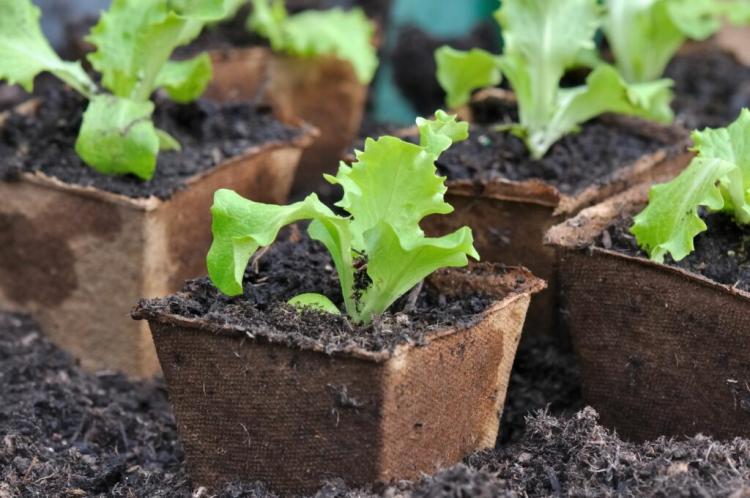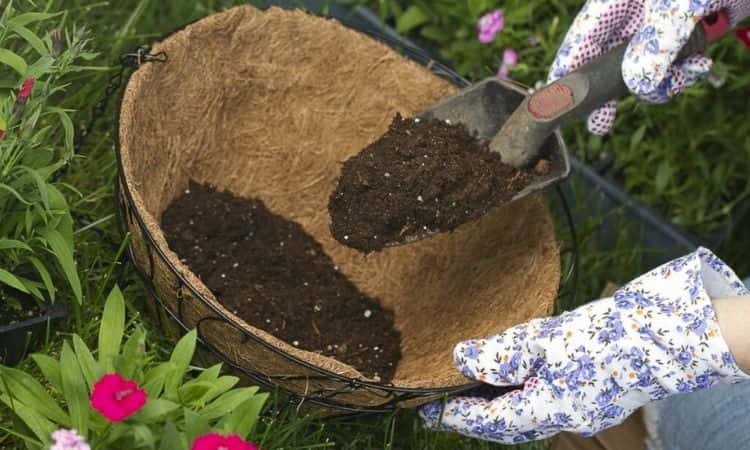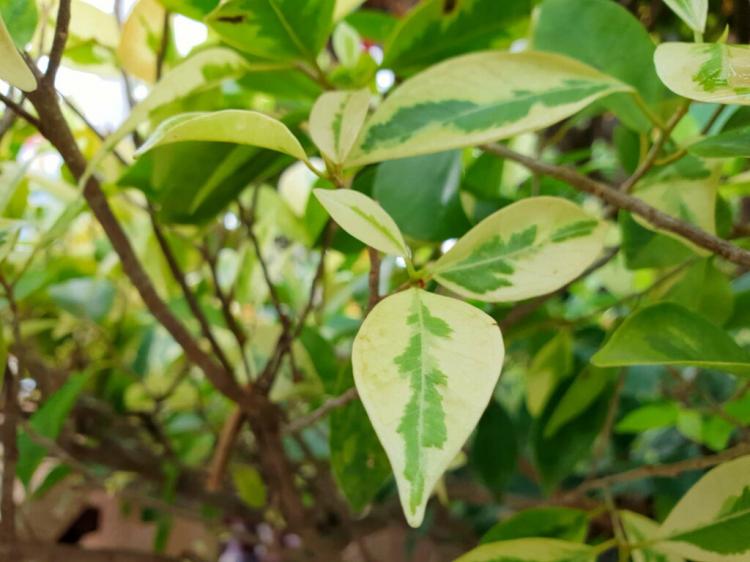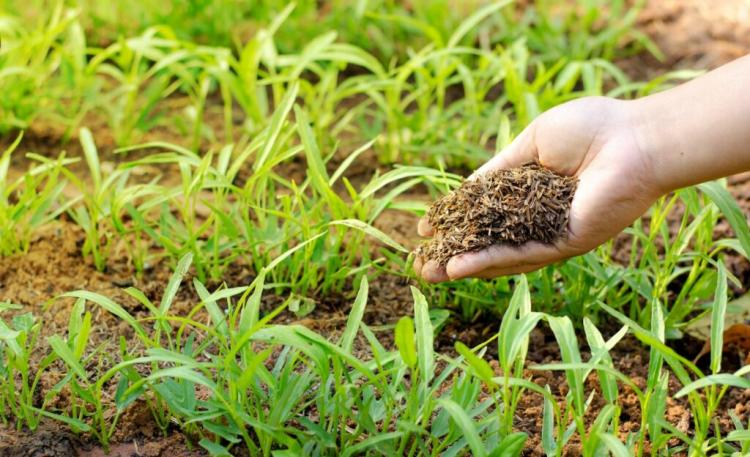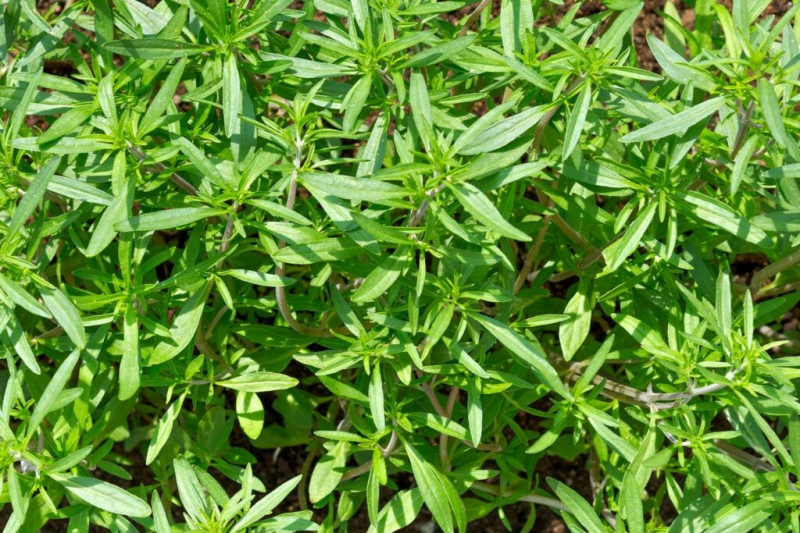Grapevine Plants: Video Instructions And Tips For Choosing A Variety
They should be fruity, sweet, and seedless! We take a close look at the colorful variety of red, white, and blue grapes for cultivation in the home garden.
Grape lovers get their money’s worth in the supermarket all year round. As soon as the vineyards in Europe have shed their colorful autumn dress, the harvesters in South Africa, India, and Chile are already buzzing through the local vines. Once transported around the globe, they are then on our shelves. But even in the local grape season, gourmets often look for local goods for a long time.
If you no longer want to use grapes from Italy, Greece, Spain, or Turkey, you can also grow this juicy delicacy in your own garden. Grapevines not only provide delicious fruit but also give the garden a romantic flair when they climb fences and walls. We show how you can enjoy your own grapevine and what you have to consider when planting.
The right time and location to plant grapevines
Table of Contents
Grapevines can be planted all year round, according to the table grape expert Schmidt from the Schmidt nursery in Obernbreit. Planting in spring is common. As a heat-loving plant, the vine thanks a sunny place. Pure south or west sides or locations facing south-east or south-west are recommended for cultivation. In addition, it makes sense to plant the vines close to a building wall. This radiates the heat stored during the day at night and thus protects the vines from damage caused by the cold.
Before planting, it should be ensured that the site is not endangered by backwater. Clay or loam floors are ideal. But light sandy soils are also suitable, provided that a good humus supply is guaranteed. Good soil loosening is also crucial. If necessary, the soil should be loosened before planting.
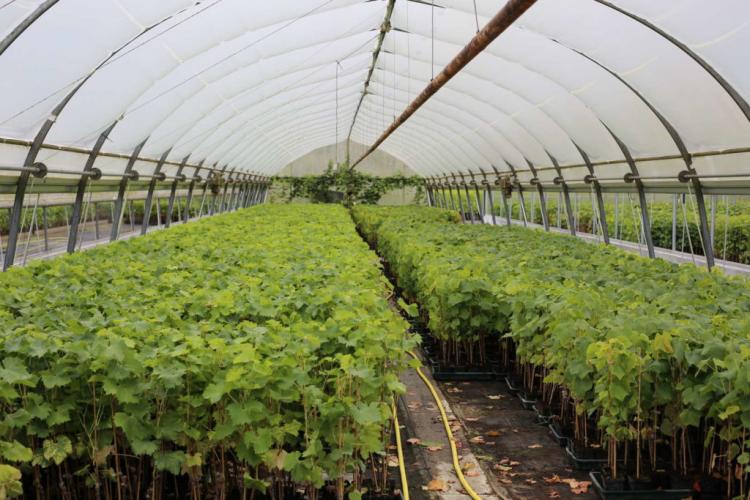
The correct procedure for planting grapevines
There are a few things to consider so that you can soon be able harvest grapes from your own grapevine yourself. Below we explain how to go about planting grapevines.
This is what you need to plant grapevines
It doesn’t take much to plant a grapevine. The following materials are required for planting:
- grapevine
- A spade
- A pair of secateurs
- Plant substrate
- A coconut mat
- A piece of string
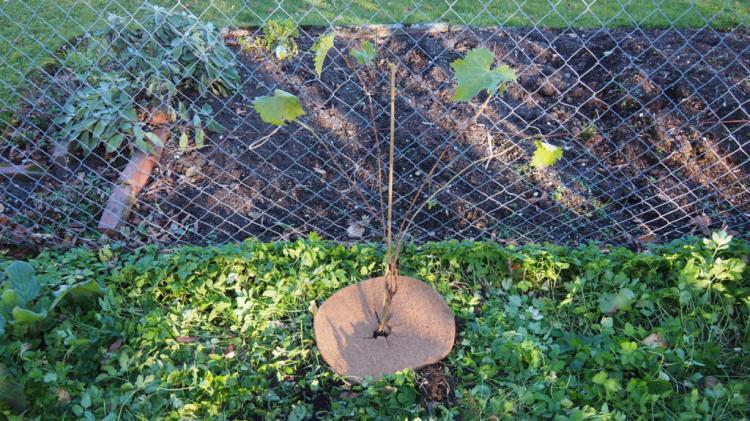
Dig a planting hole for grapevines
As soon as a suitable location has been found, a 30 cm wide and 40 cm deep pit is to be dug into which the vine is to be inserted later. The planting hole should be about twice as deep and wide as the root ball. The bottom of the planting hole is now improved with a little fresh substrate – we recommend using special soil for berry plants. In addition, some organic soil activators can be added so that the grapevine gets a perfect start in the new home.
You might so like: How To Planting Aronia Berries: Care And Harvesting Healthy Chokeberry
Prepare the vine for planting
However, before the plant can finally move in, it must be prepared accordingly. To counteract the spiral growth of the roots, which is common for plants from the pot, the root ball is slightly cut all around and loosened the soil with your hands. The small injuries also stimulate root growth. So that the vine grows quickly, it is advisable to saturate the root ball with water before planting. To do this, the plant is placed in a container filled with water until the root ball has soaked up.
Plant grapevine
Now the grapevine can be placed in the planting hole and this can be filled with substrate. Certain caution is required here: the processing point itself must not be buried. This must look out over the pit and is only lightly piled up with earth. Cavities around the root ball are closed by lightly stepping on it.
If the grapevine is secure and firm, the individual shoots of a climbing aid can be tied. A garden fence, for example, is also suitable for this. Then the plant is well watered. To keep weeds away, a coconut mat can be placed around the trunk.
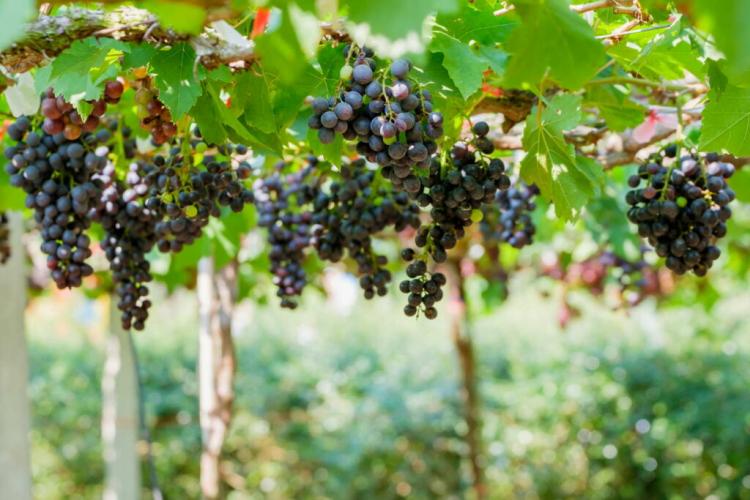
Grape varieties: hardy and fungus-resistant
Resistance to fungi is particularly decisive for a successful harvest in the garden. Powdery mildew (Oidium) and downy mildew (Peronospora) are the arch enemies of every vine. Therefore, when choosing the grape variety, it is important to ensure that it is very resistant to fungi. The varieties Arkadia Rozowa, Frumoasa alba, Straschinksi, Suzi, Vanessa, and Venus have proven to be particularly resistant. A. Rozowa, a red Russian table grape, also impresses with its large and early-ripe grapes, which can be harvested from the beginning of September. But the Vanessa (rose-colored) and Venus (blue grape) varieties also give grapes ripe early and also boast that they are seedless. A feature that is often desired.
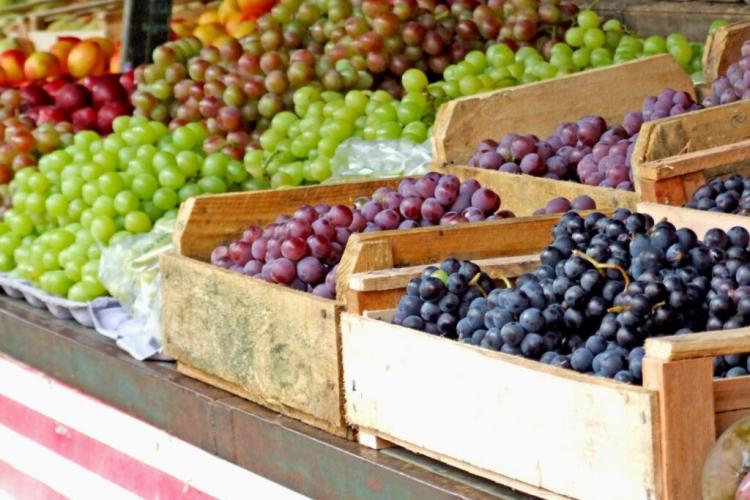
If you like it crisp, you will get your money’s worth with the Muscat Bleu variety. The Centennial seedless variety (green-yellow color) from the USA, as the name suggests, also does not contain any seeds. Its fine nutmeg aroma makes it very interesting in terms of taste and as a frost-tolerant variety, it is suitable for cultivation in non-typical wine-growing regions. The Russian variety Michurinski (blue grape), which is frost-resistant even down to -35 ° C, is particularly insensitive to the cold. A specialty that even her Russian counterpart, the Rote Victoria and the Ukrainian varieties Wodograi, cannot quite keep up with.
You might so like: Blueberry Soil: What Should Be Considered?
The range of aromatic and robust varieties for cultivation in our latitudes has continued to grow in recent years. After choosing a healthy and resistant grape variety, you should decide according to your taste, whether white, blue, or rosé, early or late ripening, and whether with or without seeds.
Common diseases and pests in grapevines
To put an end to fungal diseases in particular, and above all powdery mildew and downy mildew, it is important to ensure an airy cut. According to Schmidt from Obernbreit, February-March is the best time to cut the vines. Schmidt explains how to cut with a rule of thumb: “Fruitwood is annual wood. One or two rods from last year’s wood must be left standing. The flowers develop from these eyes ”. If the fungus appears despite proper pruning, the expert recommends a copper preparation that must be used before and after flowering.
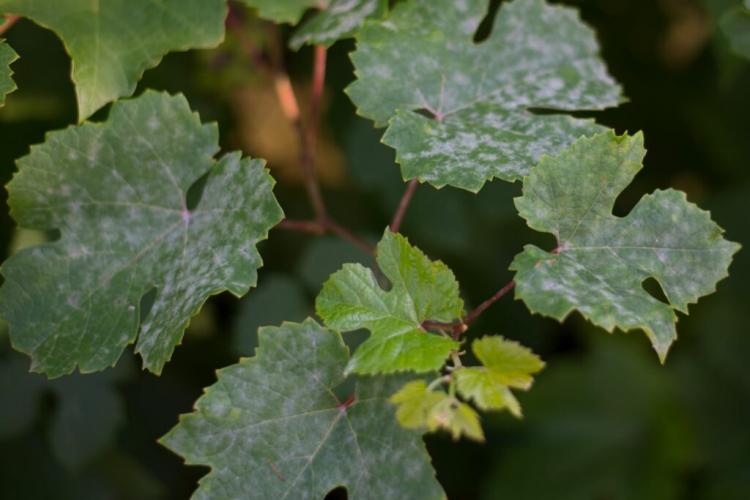
Animal pests such as smallpox mites, on the other hand, are comparatively harmless, and disposing of the infected leaves is sufficient. In order not to have to share the grapes with wasps and birds, an organza bag is helpful. The bag is put over the grape and protects it from unpleasant feeding. You can find out more about how to protect grapes from wasps and birds in our special article.
If you want to know more about the care and fertilization of grapevines, you can read on here.

